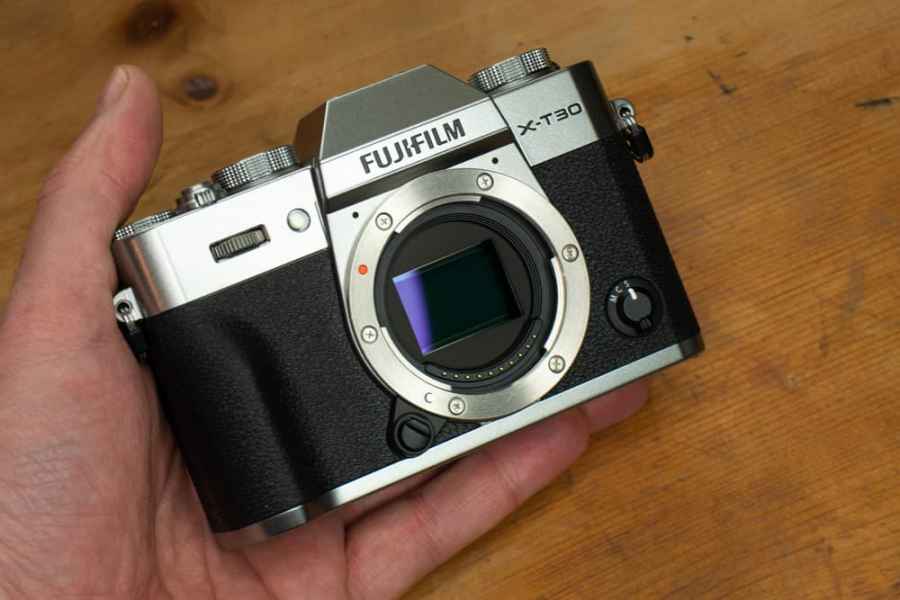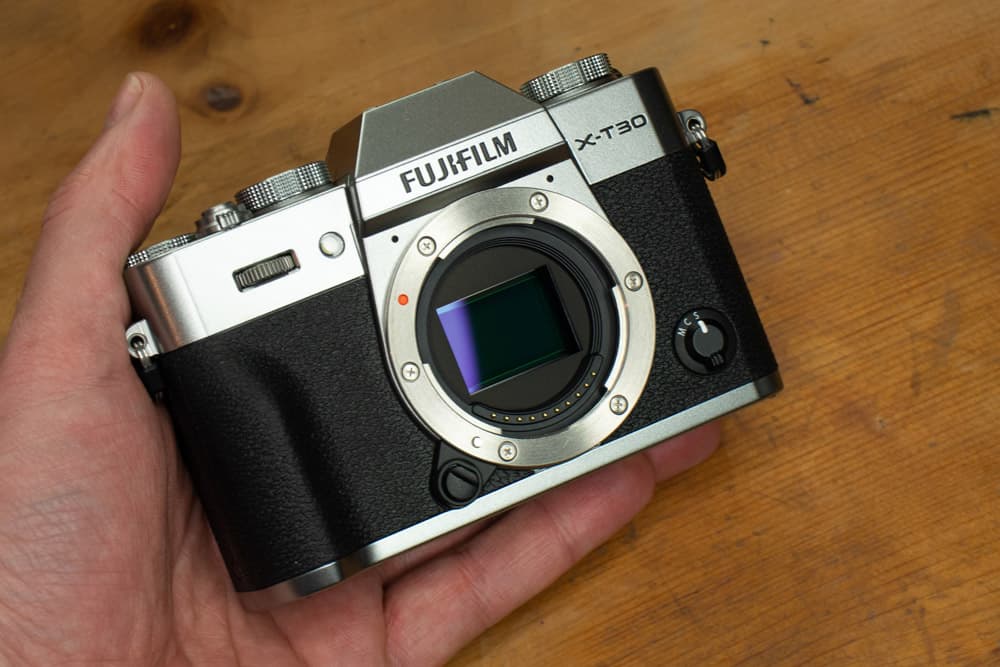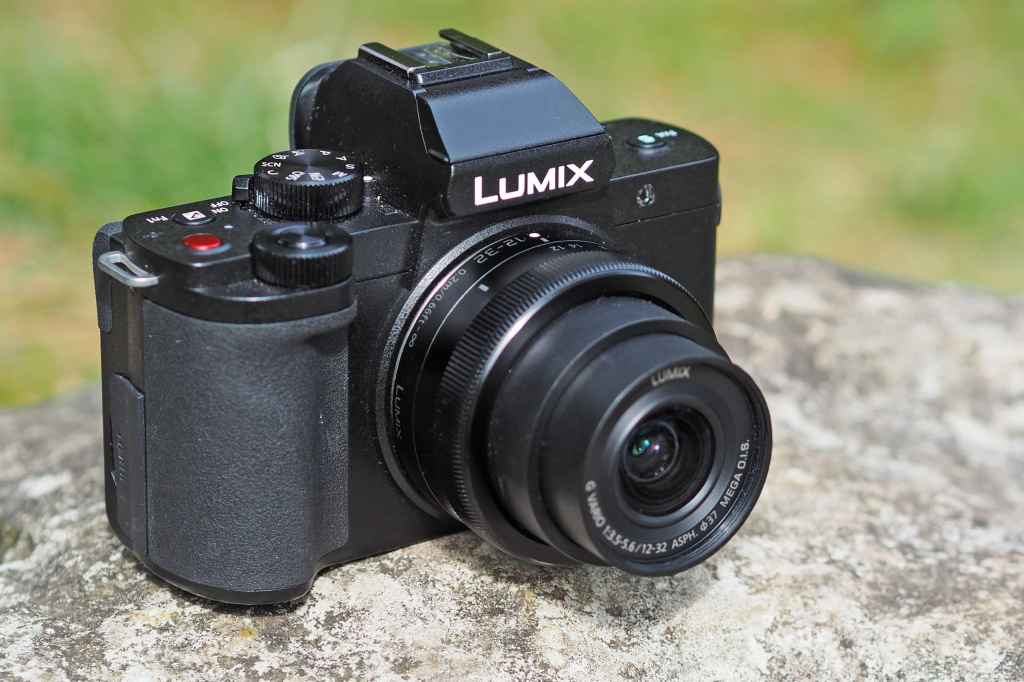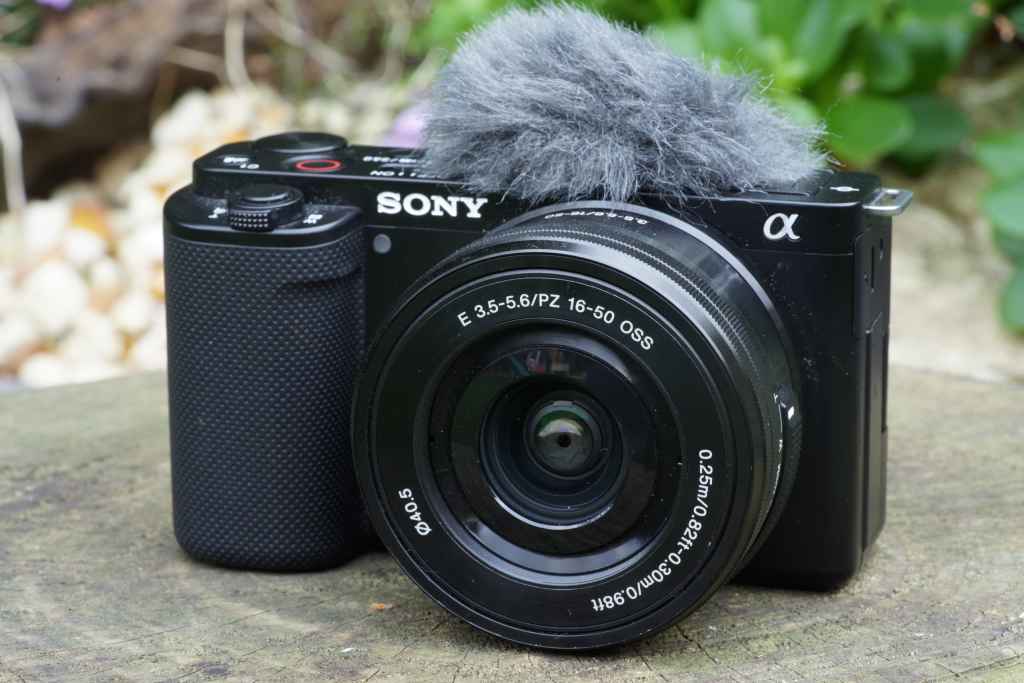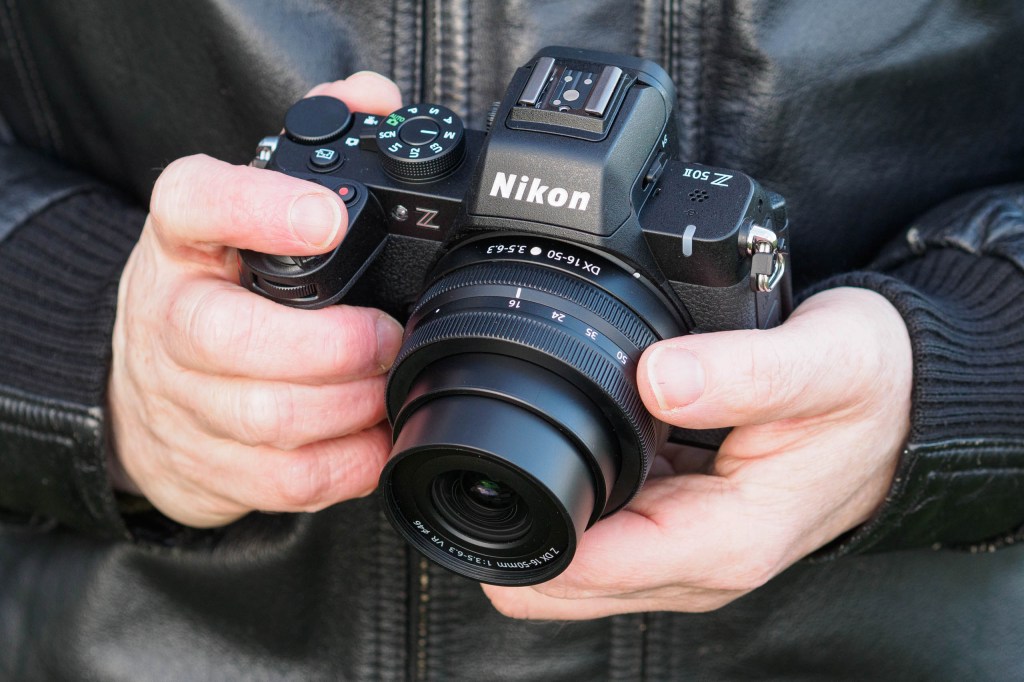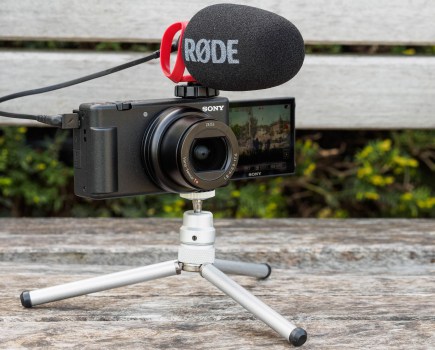Buying your first real camera – or one for somebody else – can be daunting, given the number and variety of models available. You might also wonder how much to spend on one for a beginner. Be daunted and wonder no more, for our experts have done this tricky homework for you here, and compiled some top cameras for different types of interest.
The eight cameras below meet our criteria for a great beginner’s model: user-friendly, they take better photographs than a smartphone, and are affordable. It is a selection of cameras that we’ve reviewed and feel are a worthwhile investment for new photographers. There are choices at different prices and, while not exactly cheap, we consider all to be of great value – including the older models now only available second-hand.
We’ve focused on interchangeable-lens as these give new shooters a better platform from which to learn. For a camera with a fixed lens, check out our guide to the best compact cameras.
Mirrorless or DSLR?
Our list reflects the current state of the camera market – more mirrorless cameras than DSLRs. This is simply where the latest developments now happen, though some photographers still prefer DSLRs. Our rundown of DSLRs vs mirrorless explains the main differences between the types. At the bottom of this page is a rundown of key specs to look out for when buying a beginner’s camera.
Best cameras for beginners: our quick list
- Best camera for beginners overall: Canon EOS R50 – Buy now
- Best Fujifilm camera for beginners: Fujifilm X-T30 II – Buy now
- Best Olympus for beginners: Olympus OM-D E-M10 Mark IV – Buy now
- Best budget vlogging camera for beginners: Panasonic Lumix G100 – Buy now
- Best vlogging camera for beginners: Sony ZV-E10 – Buy now
- Best Nikon camera for beginners: Nikon Z50 ll – Buy now
- Best Sony camera for beginners: Sony A6400 – Buy now
- Best budget DSLR for beginners: Pentax K-70 – Buy now
Looking for the best deal on beginners’ cameras? Not only will you find the best cameras for novices/rookies, but also some of the best camera deals, as our ‘Buy now’ buttons are setup to automatically take you to the best prices from trusted retailers. There is also a list of other retailers below each camera, so you can find the right deal for you.
We also have guides to the best DSLRs and the best mirrorless cameras if you already know which type you want.
Why you can trust Amateur Photographer
We spend many hours testing every product we recommend, in detail, in a variety of situations and shooting scenarios, and only use experts for our reviews, so you can be sure that you’re getting the best products. Find out more about our expert writers.
Best overall for beginners
Canon EOS R50
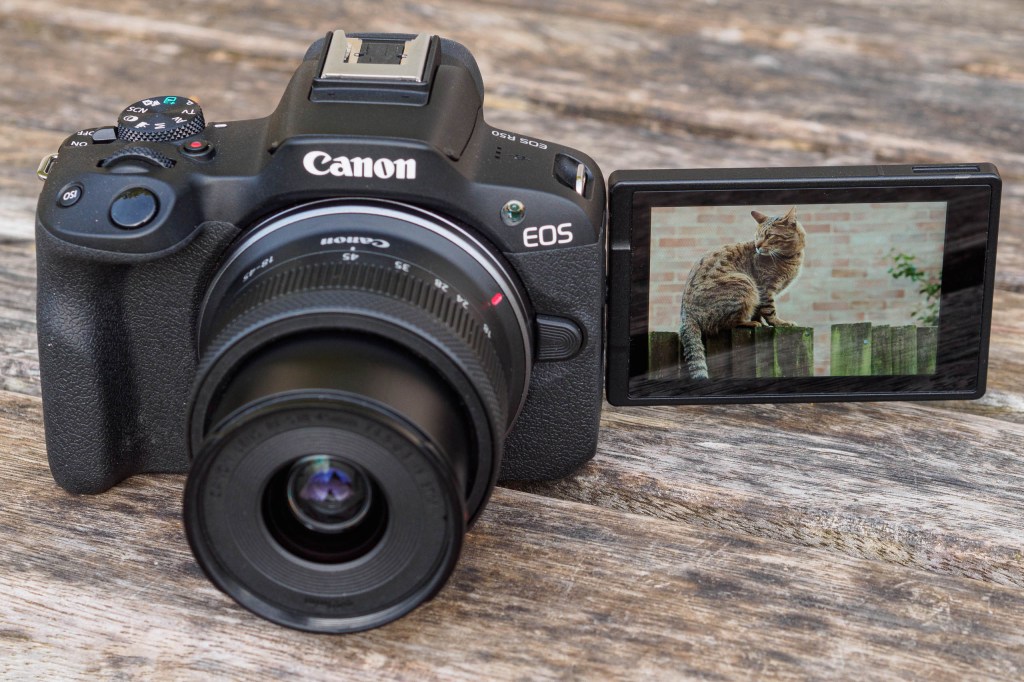
Amateur Photographer verdict
A really good option for budding photographers: small and light, yet comfortable in the hand, with excellent touchscreen interface, it produces consistently fine JPEG files direct from the camera.- Very compact and lightweight
- Extremely capable autofocus
- Rapid continuous shooting for its class
- Limited physical controls
- Small, dim viewfinder
- Very limited RF-S lens range
At a glance:
- Mirrorless camera
- 24.2MP APS-C sensor
- Canon RF/RF-S lenses
- 4K video
- $729 / £749 body only, $849 / £859 with 18-45mm lens
Canon has increased its range of affordable APS-C EOS RF mount mirrorless cameras. The EOS R50 is not the cheapest – that’s the Canon EOS R100 – but it’s the cheapest to use Canon’s most up to date sensor and autofocus technology. We also like the somewhat more advanced EOS R10, but the EOS R50 really hits the sweet spot for beginners, combining features, performance and value. Also, second hand models can be found now, too.
Canon was initially slow to bring out RF-S lenses for this new format but, happily, that is changing with a new wide-angle option recently added. By the time most beginners have reached the limitations of the standard 18-55mm kit lens, there should be a decent range of lenses.
For its price, the EOS R50 is designed with appealing features: a very good 24-megapixel sensor, excellent autofocus and terrific burst shooting capabilities for such an entry-level camera.
Read our Canon EOS R50 review
Best Fujifilm for beginners
Fujifilm X-T30 II
Amateur Photographer verdict
Exceptional image quality and rapid auto-focus for such a compact, portable camera justify the inclusion on this list – despite its price, it is great value.- Gorgeous JPEGs straight from camera
- Satisfying manual controls
- Stylish, high-quality construction
- A little pricey for entry-level
- Annoying Q button placement
Fujifilm X-T30 II at a glance:
- Mirrorless camera
- 26MP APS-C X-Trans CMOS sensor
- Fujifilm X lenses
- 4K video
- $999 / £799 body only
Fujifilm’s X-T30 II updates the popular X-T30. What’s great about the Fujifilm X-T30 II is that it features the same impressive 26MP APS-C X-Trans CMOS sensor that appears in several of Fujifilm’s flagship cameras (until they started putting 40MP chips in the top models, anyway). This means you get excellent image quality, great noise performance and, for those who like manual controls, there is direct access to camera settings. There’s also 4K video recording, and a range of Fujifilm X-Mount lenses available, it has a metal camera body, and high-speed shooting. All in all, this camera provides terrific scope of use and potential.
Read our Fujifilm X-T30 II review.
Best Olympus for beginners
Olympus OM-D E-M10 Mark IV
Amateur Photographer verdict
Attractive design and most pleasant to use. Twin-dial design gives scope to take more control. Access to small, affordable lenses its IBIS works well with- Bright, punchy images full of character
- Small and enjoyable to use
- Has advanced features too
- No mic socket for video
- Smaller sensor impacts raw image quality
At a glance:
- Mirrorless camera
- 20MP Four Thirds sensor
- Micro Four Thirds lenses
- 4K video recording
- $730 / £779 body only
Based around a 20MP sensor, the Olympus OM-D E-M10 Mark IV mirrorless camera offers excellent JPEG image quality with extremely attractive colours. The design is stylish and the ergonomics are well laid-out, while extremely effective in-body stabilisation keeps pictures sharp. You also get a good set of useful advanced features and the camera is supported by a fine set of small, affordable Micro Four Thirds lenses. You’ll also find the camera offers Wi-Fi and Bluetooth connectivity, as well as 4K video recording. With In-Body Image Stabilisation, it offers great value for money.
Read our Olympus OM-D E-M10 Mark IV review.
Budget vlogging camera for beginners
Panasonic Lumix G100
Amateur Photographer verdict
A competent camera and great entry-point to the Micro Fours Thirds system. Good to shoot both photos and video: less so to specialise in one of these over the other, however.- Impressive audio + vlogging features
- Comfortable grip for small body
- Impressive EVF
- Price has dropped
- Heavy Crop in 4K with electronic stabilisation
- 10min record time when shooting 4K
At a glance:
- Mirrorless camera
- 20MP MFT sensor
- Micro Four Thirds lenses
- 4K video
- from $640 / £510 used with 12-32mm lens
The Panasonic Lumix G100 is sometimes overlooked as a beginners camera, but has a lot to offer. It’s very compact, but still packs in an electronic viewfinder and a vari-angle rear screen. It uses the Micro Four Thirds lens mount, which means there is a wide lens choice from Panasonic, Olympus and independent makers.
It’s designed very much with vlogging in mind, with an advanced in-camera audio system, though most vloggers will probably swap to an external microphone at some point. The G100 does have a couple of limitations, however, including no in-body stabilisation and a 10-minute recording limit when filming in 4K.
Having said that, its design and lens choice make it a terrific camera for stills photography too, and at today’s prices the Lumix G100 delivers an awful lot of camera for the money, especially beginners interested in hybrid content creation. It’s also undergone something of a price slash recently, and can currently be picked up with a lens very reasonably.
Read our Panasonic Lumix G100 review
Best vlogging camera for beginners
Sony ZV-E10
Amateur Photographer verdict
With its extensive feature set, great autofocus and an 11fps shooting rate, this punches above its light weight. Plenty of creative scope for content creators; photographers too with a decent lens.- Great value entry point to Sony’s E-mount system
- Excellent features for vloggers and casual video users
- Terrific autofocus for its price
- Fully articulated 3inch touchscreen
- Basic button control for photography use
- Older, lower capacity NP-FW50 Battery
- No electronic viewfinder
At a glance:
- Mirrorless camera
- 24MP APS-C sensor
- Sony E lens mount
- 4K video
- $798 / £549 body only
The Sony ZV-E10 was the second of Sony’s ZV-series ‘vlogging’ cameras. It can be used for stills photography too, but the lack of a viewfinder and limited external controls are restrictive. It also uses technologies from Sony’s older A6000-series cameras, so while its autofocus system is right up to date, the sensor is a little prone to ‘rolling shutter’ effects.
There are two very appealing things about the ZV-E10 for beginners, however. One is that there is a wide range of E-mount lenses for this camera, including lenses designed specifically for its APS-C sensor format. The ZV-E10 has a clear advantage over its Canon and Nikon mirrorless rivals in this respect. The other advantage is the price, as this is the cheapest route into Sony’s E-mount camera system.
Other features included a full-articulating rear screen and a clip on wind shield to reduce buffeting in outdoor shots. It’s usually sold with a very compact 16-50mm power zoom kit lens which, while not the best optically, is perfect for newbie filmmakers.
Read our Sony ZV-E10 review
Best Nikon for beginners
Nikon Z50 ll
Amateur Photographer verdict
The Nikon Z50 II is a great little camera with an impressive feature set for the price. While not the ultimate user experience, it produces great results.- Excellent image quality, especially in raw
- Unusually good viewfinder for its class
- Fully articulated rear screen
- Very capable autofocus system
- No AF-area joystick (d-pad instead)
- No in-body image stabilisation
- Limited range of native DX Z-mount lenses, especially zooms
- Mode dial is easily knocked out of position
At a glance:
- Mirrorless camera
- 20MP DX-format CMOS sensor
- ISO 100-51,200 (standard)
- Up to 11fps continuous shooting
- 4K 30p video recording; 4K 60p with 1.5x crop
- 2.36m-dot, 0.68x EVF with 1000-nit brightness 3.2in, 1.04m-dot fully articulated touchscreen
- $1,007 / £849
- $1,147 / £999 with 16-50mm kit zoom
- $1,397 / £1,199 with 16-50mm and 50-250mm lenses
An update to the Z50, Nikon’s first APS-C sensor (DX-format) mirrorless camera, this Z50 II sports the same 20MP DX-format sensor, yet gains plenty of enticing new features. Sophisticated autofocus (AF) options with improved subject detection and 3D tracking follow your subject and keeps it in focus, so you can avoid blurry or out of focus shots.
Its 11fps burst shooting is quite fast, letting you freeze fast-paced scenes while the hybrid autofocus system keeps up with the action in style. There is also an option to shoot 30 fps if you are happy with the lower, JPEG-only output. It’s 209 phase detection AF points cover the vast majority of the frame, and both Eye and Face Detection AF are on board, so it is also ideal for portraits.
With a fully articulated touch screen that can face completely forward, it is well suited to vlogging and video use as well as taking self-portraits. Nikon also added a ‘product review’ mode that focuses on a product held up to the camera (instead of the presenter’s face). This makes the Z50II a great choice for stills as well as video and content creation.
If you are a complete novice Nikon’s got you covered as well, the Intelligent Auto Mode takes care of your exposure settings, so you can focus on creating and composition without having to learn everything at once.
As with most other DX format Nikon cameras there’s no in-body image stabilisation (IBIS) on board, so the camera relies on in-lens optical stabilisation, and can be further enhanced by electronic stabilisation during video recording. This is important when shooting hand-held or in low light, but there are always tripods and gimbals to further stabilise your shots.
There aren’t many native DX-format lenses for Z-mount. The full-frame lenses will still work on the Z50 II but tend to be both bulky and expensive, which compromises the appeal of a cheaper APS-C camera.
Read our Nikon Z50 ll review
Best Sony for beginners
Sony A6400
Amateur Photographer verdict
At once challenging and rewarding for a first camera. Wonderful images and great to learn with for those who can handle it.- Astonishing subject-tracking autofocus
- Excellent image quality in almost any shooting situation
- High level of customisable control
- Compact size
- Decent build quality
- Outdated body design less nice to use than rivals
- No in-body image stabilisation
- 16:9 LCD screen gives small display area for 3:2 stills
At a glance:
- Mirrorless camera
- 24MP APS-C sensor
- Sony E lens mount
- 4K video
- $748 / £749
The Sony A6400 has been around for some time and is a good camera for beginners who want to get serious about both photography and video. That said, if video is your main interest, the ZV-E10 is both more up to date and a good deal cheaper.
For beginner photographers, though, the Sony A6400 has a lot to offer: a compact, well-made body with a built in electronic viewfinder and features, and controls that will satisfy many enthusiasts too. Like the ZV-E10, it has access to a wide range of APS-C Sony E-mount lenses, and you can also fit full frame Sony FE lenses, (though these could prove quite heavy and cumbersome on the A6400’s compact body).
Image quality is excellent, as is the A6400’s autofocus system. It might be one of Sony’s older models, but you wouldn’t know it. The A6400 does hold its price well, though, so is no cheap option. It’s also not without its flaws, including a rather small rear screen and indifferent handling.
Read our Sony A6400 review
Best budget DSLR for beginners
Pentax K-70
Amateur Photographer verdict
Large viewfinder and twin control dials make this pleasant and versatile to shoot with. Its in-body stabilisation system works well with all of the vast array of lenses that can be used with it.- Gorgeous, bright viewfinder
- Effective stabilisation
- Tactile handling experience
- LCD screen not touch-sensitive
- Autofocus struggles with moving subjects
At a glance:
- DSLR
- 24MP APS-C CMOS sensor
- Pentax K-mount lenses
- Full HD video
- around $500 / £380 body only, used
Pentax has gained a deserved reputation for producing cameras that provide great value for money, and the entry-level K-70 DSLR is no exception. Built around a 24.2MP APS-C CMOS sensor, notable highlights are a large, bright pentaprism viewfinder with 100% coverage, full weather sealing and an in-body image-stabilisation system – none of which you’ll find on the K-70’s direct rivals from Nikon and Canon. Other features include ISO sensitivity of ISO 100-102,400 and 6fps continuous shooting. For the price, it’s easy to recommend.
Read our Pentax K-70 review.
How to choose the best camera for beginners
A good beginner’s camera should offer a degree of manual control, so that you can learn how the different settings affect a final image. It’s important to think about sensor size as well; in this guide, we’ve dealt with APS-C and Micro Four Thirds, as these generally suit beginners. APS-C sensors are larger, which improves image quality, but they also require larger, pricier bodies to house.
Consider video features. Do you want the option to shoot 4K video? Then there’s the autofocus system the camera uses, as well as its maximum burst speed (measured in frames per second). Both of these are important if you want to shoot fast action or wildlife. If, however, you prefer to shoot landscapes or portraits, you may want to prioritise sensor resolution, measured in megapixels.
How we test cameras
We test cameras by taking photographs and video in a wide range of real-world situations, including in low-light and in bright conditions. We evaluate the control layouts, handling, and usability of their viewfinders and screens. Autofocus is assessed across a range of different subjects and shooting scenarios, along with a camera’s continuous shooting capacity.
We also examine the effectiveness of image stabilisation systems. Last but not least, we critically evaluate the image quality in both JPEG and raw, including resolution, high-ISO noise, and dynamic range. For our final conclusion and score, we take all these factors into account, along with portability and lens systems. You’ll find the full breakdown of how each camera has performed in our full reviews.
Recent updates
October 2025: Prices updated and ” buy now” links checked and corrected. OM-System E-M10 III, Canon EOS 250D and EOS R10 removed in favour of the more appropriate Canon R50, likewise the Nikon Z50II replaces the Nikon Z30. Introduction and descriptive text throughout abbreviated where appropriate.
Our guide to different camera types has some great insights into the world of cameras for beginners.
Once you’ve chosen a camera, it’s worth looking at some accessories to help you get the most out of your kit. Our Top 10 Essential Camera Accessories for beginners highlights some good ones.

